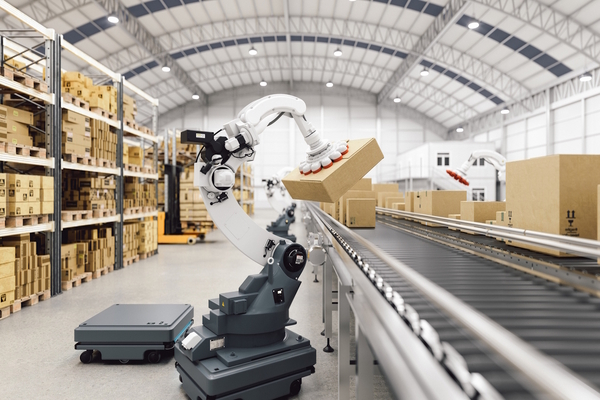Work reimagined: intelligent automation is key to improving business performance
Sponsored by Blue Prism
Long before Covid-19, scaling businesses and enterprises faced common challenges such as lagging productivity, increased customer expectations and the complexities of business transformation. Then the pandemic hit and delivered an abrupt end to “business as usual”. Organisations were forced into dramatic operational transformation and to rethink customer and supplier engagement. Transformation became not just about improving business performance but also about surviving in a new climate of uncertainty.
The pandemic highlighted flaws, but it also showed how digital agility can help overcome the hardest challenges. You only have to look at how the NHS leveraged intelligent automation to roll out one of the fastest vaccination programmes in the world to see the true benefits of digital transformation.
With intelligent automation proven and available to every business leader, it’s time to use this technology to strategically and significantly improve overall business performance. In fact, research suggests that companies that invested heavily in intelligent automation in the years prior to the pandemic were able to improve their operations and business performance exponentially. Without strategic investment in automation and a clear digitalisation roadmap, businesses’ competitiveness will inevitably degrade over the next five years as the gap widens with those who have embraced it.
Automation programmes succeed best when executed within a strategic context. Simply aiming for tactical efficiency gains is not enough and can limit overall performance. Companies who invest strategically in smart technologies deliver value best when planning automation holistically across the organization. It should be focused on clear, well-defined value creation via productivity, employee engagement, better customer experience, cost savings, competitive edge or other specific values tied directly to core strategic initiatives.
A digital workforce of software robots
Blue Prism is pioneering enterprise-scale automation that will see a much larger adoption of automation across organisations, evolving from single digital worker process-focused robotic process automation (RPA) to organisational scale automation via a digital workforce, AI-infused and fully integrated with human workers. This vision of the future workforce – a seamless blend of human and digital workers – is here with us now and brings with it the ability to execute automation programmes at scale to drive competitiveness, increase productivity, improve customer experience, and work smarter and faster while encouraging growth, agility and creativity.
Choosing the right digital workers to populate your digital workforce is key to achieving the optimum level of improved business performance. However, not all software robots are created equal. Businesses need to choose wisely as the wrong automation platform can significantly limit the amount of value gained. Blue Prism encourages businesses to choose a platform designed for enterprise-scale automation operations in terms of security, robustness and access to a wide and deep ecosystem of companion technologies.
Blue Prism’s digital workers are a dependable choice for building digital workforces for enterprise-scale transformations. They have a long-proven track record in larger-scale automation and digital transformation programmes in major organisations, including those in complex and sensitive industries such as financial services, healthcare and mobile communications. Enriched with the latest artificial intelligence (cognitive technologies that act as the eyes, ears, voices and brains needed for complex tasks), these capabilities add serious power to a Blue Prism digital workforce.
Digital workforces deliver strategic value
Implementing intelligent automation via a digital workforce platform has enabled organisations to use digital workers to scale according to changes in demand, putting them ahead of their competitors and enabling them to focus precious human resources where they are needed most.
A major bank, for example, was able to revolutionise its trade finance operations via a digital workforce, reducing the wait time for trade finance by 94 per cent and giving the bank a major comparative advantage over its competitors. What at first glance looks like an efficiency play is actually a strategic business competitiveness improver. Multiply that across departments and you’re talking about true digital transformation.
In healthcare, the outcomes from digital workforces have been critical in some of the most demanding areas of the health system, including equipment supply, recruitment, vaccine management and more. Having intelligent automation that operates seamlessly with existing systems and human employees is helping save lives by freeing up human and other resources to focus on patient care as opposed to administration.
Achieve company-wide buy-in
Investment is not the only issue; senior management must prioritise and align their automation strategies.
Automating current processes piecemeal will not deliver considerable, enterprise-wide improvement of business performance. Leaders must take a step back and redesign with a blank slate, as true transformation comes from revolutionising operations holistically, not just improving isolated elements of existing ones.
For senior management, automation shouldn’t just be about cost and efficiency improvements (although these quick wins are important). Instead, they should approach intelligent automation with their eyes on the bigger prize: reimagining their operating models with a digital-first approach in alignment with and as an enabler of core strategic initiatives.
It is imperative then that companies choose a vendor that can facilitate change at scale, right across the enterprise. It’s only when businesses approach with this strategic mindset that they can improve their business performance on a profound scale.
The time is now
As we look to the future to build resilience and success post-pandemic, leaders must frame the benefits of intelligent automation at a big-picture level with an eye to achieving new levels of business performance through digital workforces: workforces that combine automation directly in cooperation with human workers.
With intelligent automation, every facet and department of an organisation can realise improvements with much lower capital investment than traditional digitisation approaches. The potential for intelligent automation is vast and well past the early adoption stage. Yet an enormous amount of business value has yet to be discovered. Digital workforces are the new strategic tool for vastly improved business performance.
To find out how to get there, businesses need only to begin their intelligent automation transformation.
by Eric Tyree, Head of Research & AI, Blue Prism

Business Reporter Team
Most Viewed
23-29 Hendon Lane, London, N3 1RT
23-29 Hendon Lane, London, N3 1RT
020 8349 4363
© 2024, Lyonsdown Limited. Business Reporter® is a registered trademark of Lyonsdown Ltd. VAT registration number: 830519543
Join the Business Reporter community today and get access to all our newsletters, and our full library of talk show episodes
Join the Business Reporter community today and get access to all our newsletters, and our full library of talk show episodes





